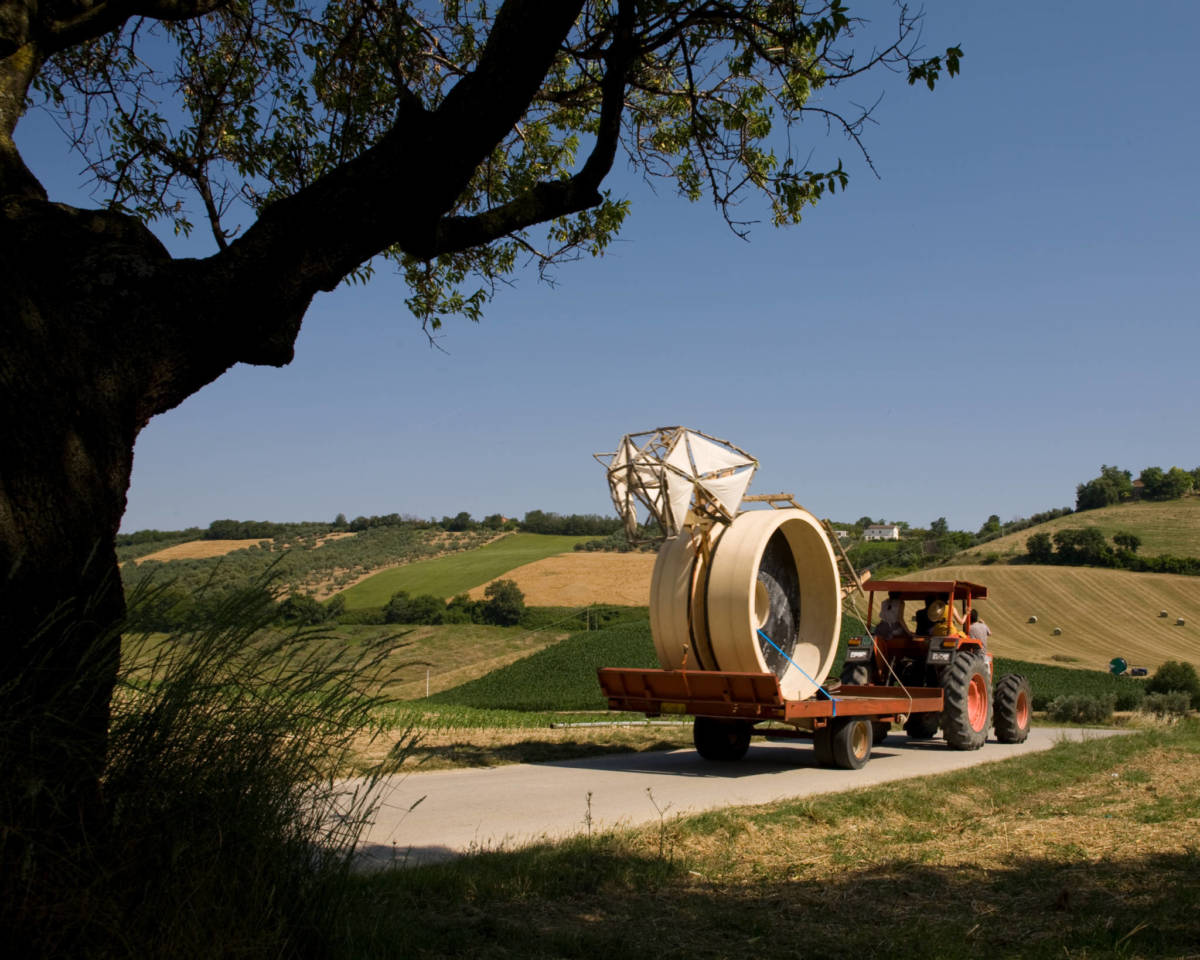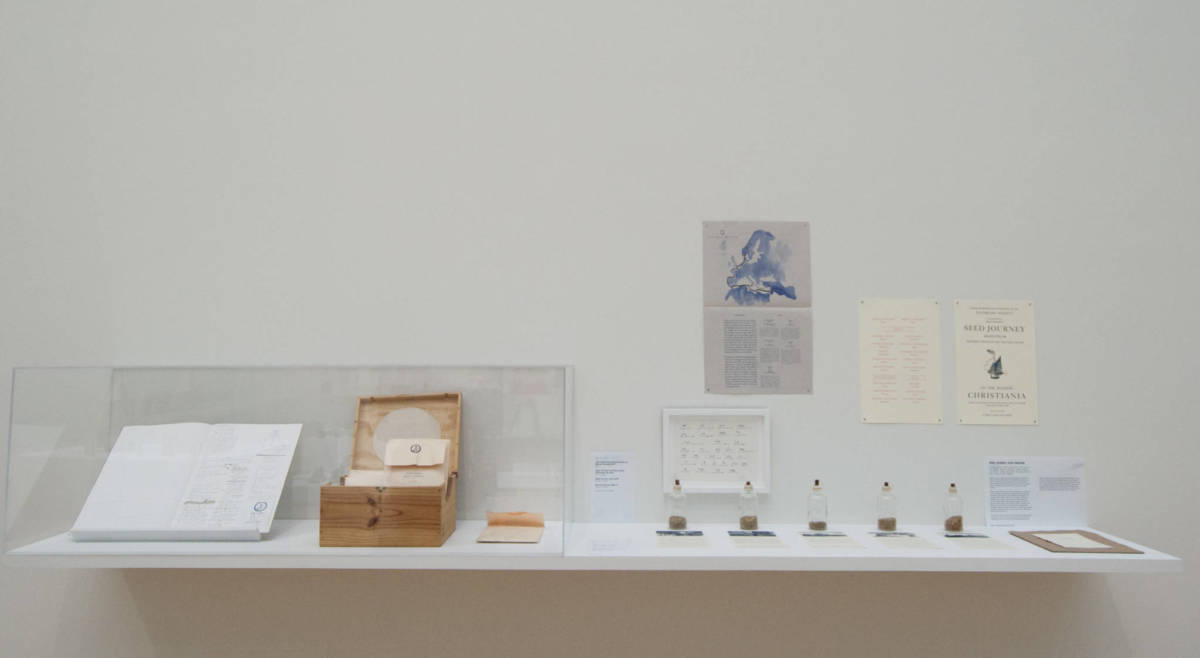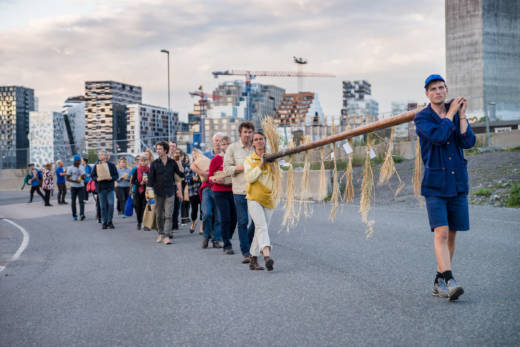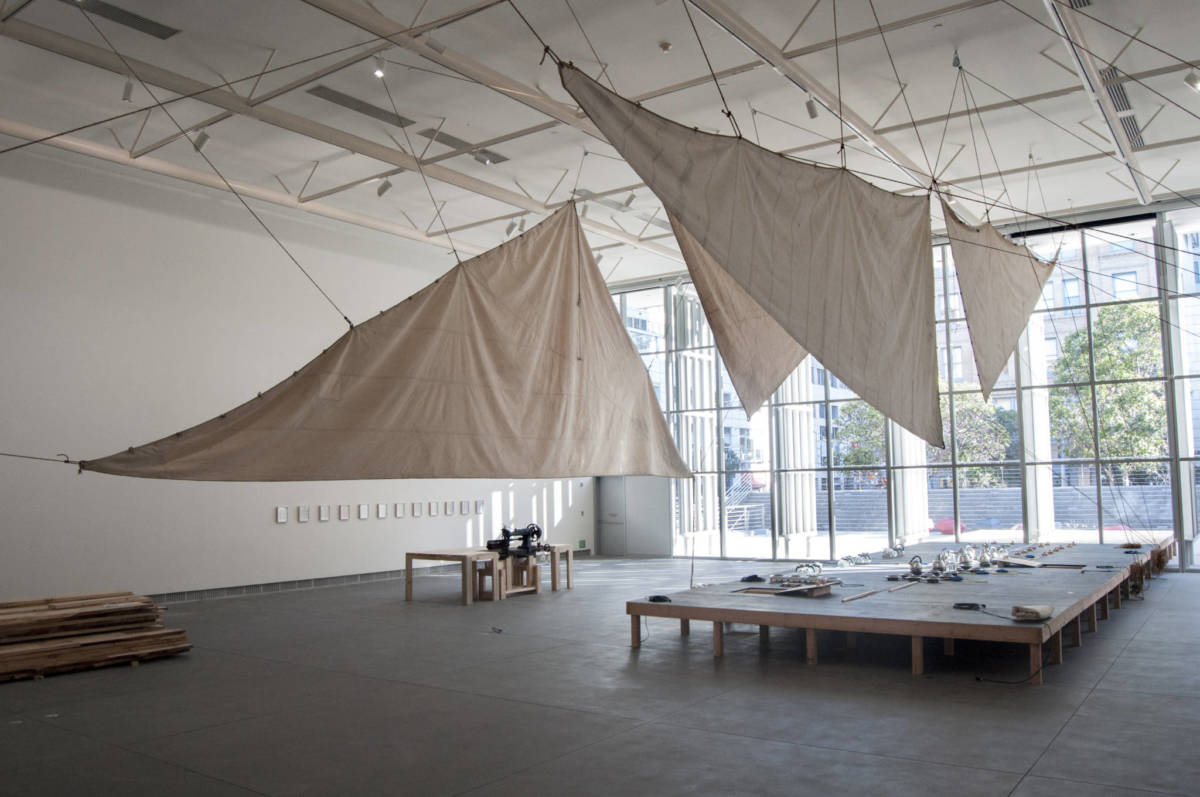Founded by artist Amy Franceschini in San Francisco in 1995, Futurefarmers is a group of artists, farmers, architects, and designers who create participatory art projects that address a diversity of issues, with an emphasis on social and ecological concerns. Futurefarmers projects often include the creation of temporary structures or sculptures, public talks, processions, and workshops, a number of which are presented in the Yerba Buena Center for the Arts’ (YBCA) retrospective Futurefarmers: Out of Place, in Place.
True to their name, agriculture plays a large role in Futurefarmers’ work, and agriculture itself looms large when considering both the ingenuity of humans’ adaptation to our environments and its potential destructiveness. Grains in particular illustrate the life-giving and civilization-creating power of agriculture, as well as the harms of monocrops, inefficient resource allocation, destruction of land, and industrial food systems.

While some of Futurefarmers’ works can be considered speculative, Flatbread Society, an ongoing project started in 2012, looks backwards in time for solutions to contemporary problems. The project began when the group was commissioned to create a permanent public artwork in Oslo, which resulted in the creation of a communal bakehouse, a series of public programs, and a demonstration site for cultivating discontinued heritage grain seeds. As a functional bakehouse and a gathering space, Flatbread Society serves as a platform for community members to consider the means of food production and the use of land within the city.
Originating from Flatbread Society, Seed Journey, also ongoing, is one of Futurefarmers’ newest and most compelling projects. The work is conceived of as a voyage in which heritage seeds, such as Finnish rye, are “rescued” from locations across northern European and repatriated to the Middle East, their site of origin. Departing from Oslo, the journey, thus far, has made stops in London, Cardiff, Antwerp, San Sebastián, and points between. These stops are accompanied by talks, workshops, processions, and communal bakings. It’s a long, indirect, and discontinuous voyage, but Seed Journey aims to enrich participants’ understanding of and relationship with grain.

Seed Journey poses questions about the relationship between individuals and cultures and our sources of sustenance. Some of these questions have become increasingly commonplace, such as those regarding factory farming, nutrition, and labor ethics, but Seed Journey looks further afield. The project considers a more primal or fundamental relationship between humans and grains — not simply a biological relationship, but something social and historical. In essence, Seed Journey treats loaves of bread as history books and the journey as a mean of reading it.




